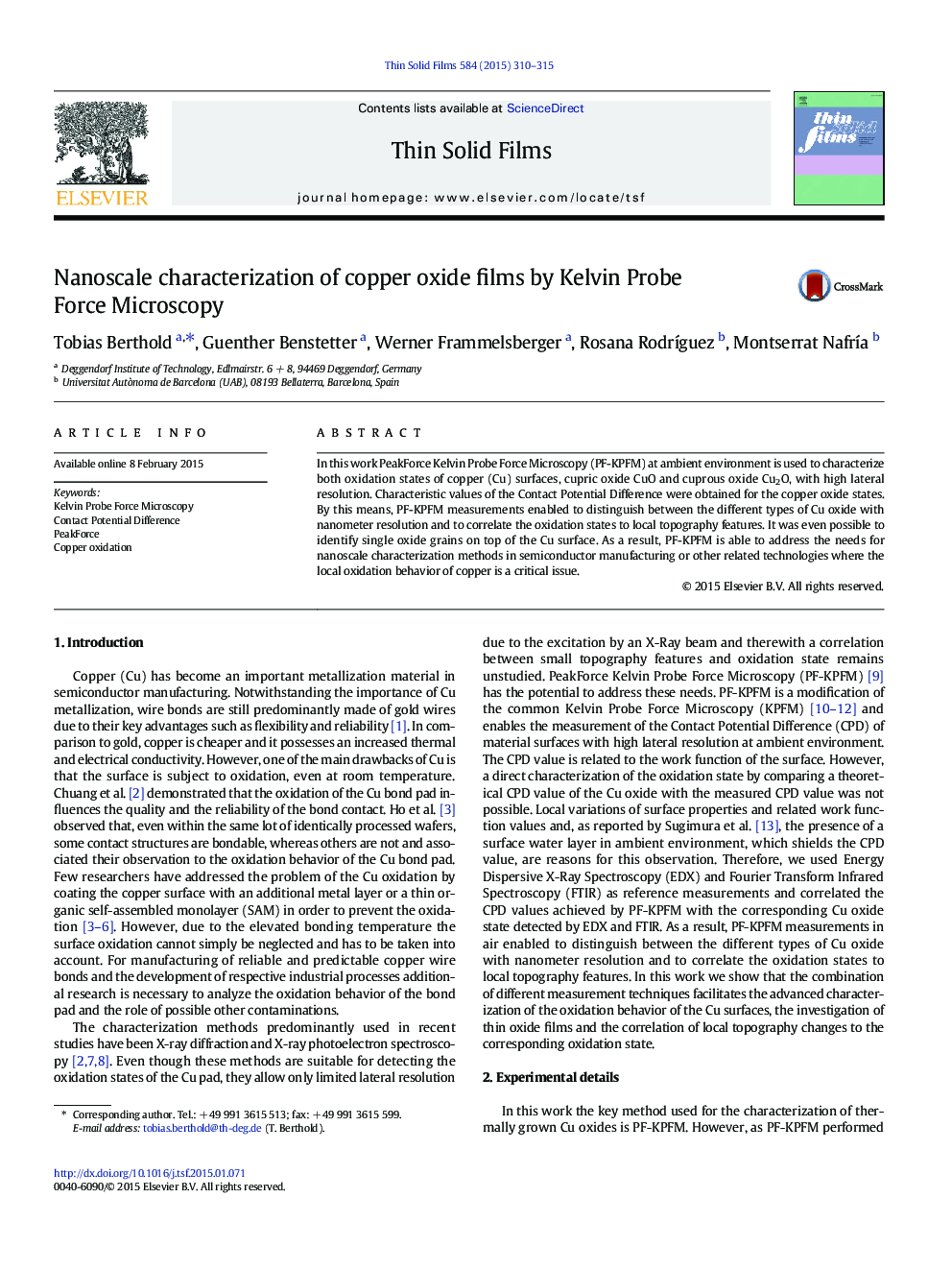| Article ID | Journal | Published Year | Pages | File Type |
|---|---|---|---|---|
| 1664870 | Thin Solid Films | 2015 | 6 Pages |
•PeakForce Kelvin Probe Force Microscopy is used to characterize the copper oxide type.•CuO and Cu2O can clearly be distinguished by the Contact Potential Difference value.•Topography and oxidation state are evaluated simultaneously at ambient conditions.•Local oxide grain structures can be characterized in the nanoscale.•CuO grains apparently merge and build up larger grains.
In this work PeakForce Kelvin Probe Force Microscopy (PF-KPFM) at ambient environment is used to characterize both oxidation states of copper (Cu) surfaces, cupric oxide CuO and cuprous oxide Cu2O, with high lateral resolution. Characteristic values of the Contact Potential Difference were obtained for the copper oxide states. By this means, PF-KPFM measurements enabled to distinguish between the different types of Cu oxide with nanometer resolution and to correlate the oxidation states to local topography features. It was even possible to identify single oxide grains on top of the Cu surface. As a result, PF-KPFM is able to address the needs for nanoscale characterization methods in semiconductor manufacturing or other related technologies where the local oxidation behavior of copper is a critical issue.
